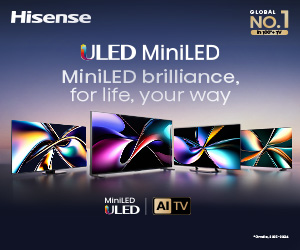Sonos wins, Google loses. What does that mean for Google users? This has been a David and Goliath court case between Sonos and Google over the latter’s infringement of five key Sonos patents.
The ruling affects almost all Google hardware with – ‘infringing hardware controller devices’ installed.
- Chromecast Audio
- Google Home, the Nest Mini, Nest Hub, Nest Hub Max, and Nest Wi-Fi
- Pixel phones, Slate tablets, and Chromebooks
You can read the 96-page plaint here, but in essence, it relates to technology for Wi-Fi connected and multi-zone speakers that Sonos pioneered and patented.
Now we are not talking about five obscure patents. These are fundamental to extremely popular home audio features, including: the set-up for controlling home audio systems; the synchronization of multiple speakers; the independent volume control of different speakers; and the stereo pairing of speakers.
The US Trade Commission has upheld David’s (sorry, Sonos’s) quest for justice to beat the giant (Google). In brief, it ruled the appropriate remedy is:
- A limited exclusion order prohibiting the importation of certain [Google] audio players and controllers, components thereof, and products containing the same that infringe one or more of claims 17, 21, 24, and 26 of the ’258 patent; claims 7, 14, and 22-24 of the ’953 patent
- Claim 10 of the ’959 patent; claims 1, 2, and 5 of the ’949 patent; and claims 1, 5, 6, and 12 of the ’896 patent
- A cease and desist order against Google.
- Public interest factors do not preclude the issuance of a remedy. A bond in the
amount of 100% of the entered value of the infringing products imported during the period of Presidential review (19 USC 1337(j)).
Sonos wins – what does that mean?
As early as 2013, Google gained knowledge of Sonos’s patented multi-room technology through a partnership with Sonos to integrate Google Play Music into the Sonos platform. However, just two years Google began wilfully infringing Sonos’s patents when it launched its first wireless multi-room audio product – Chromecast Audio. Sonos has warned Google of the infringement on at least four separate occasions since 2016.
We appreciate that the ITC has definitively validated the five Sonos patents at issue in this case. It has ruled unequivocally that Google infringes all five. An across the board win is surpassingly rare in patent cases. It underscores the strength of Sonos’s extensive patent portfolio and the hollowness of Google’s denials of copying.
Sonos spokesperson
In the interim, Google hardware will lose some functionality like adjusting the volume of all speakers in a group all at once – each speaker will need adjustment.
There is a possibility that Google will be able to degrade or eliminate product features in a way that circumvents the importation ban that the ITC has imposed. But while Google may sacrifice consumer experience to circumvent this importation ban, its products still infringe many dozens of Sonos patents, its wrongdoing will persist, and the damages owed Sonos will continue to accrue. Alternatively, Google can – as other companies have already done – pay a fair royalty for the technologies it has misappropriated.”
Sonos Chief Legal Officer Eddie Lazarus
Cybershack view – Sonos wins
Now I know Sonos pretty well, and it is a nice, friendly, ethical US company (est 2002). It solely develops multi-room audio products – wireless Ethernet speakers; soundbars; sub-woofer; network audio streamer; network extender; amps; specialist architectural speakers and more. Its functionality is tied to the Sonos app for Android and iOS. That has one of the largest aggregations (>80) of streaming audio providers, so you can stream from the speaker. In 2017 it launched the Sonos One with voice assistant support.
My guess is that Google will negotiate payment for using the patents, at least until it can find workarounds.









Comments